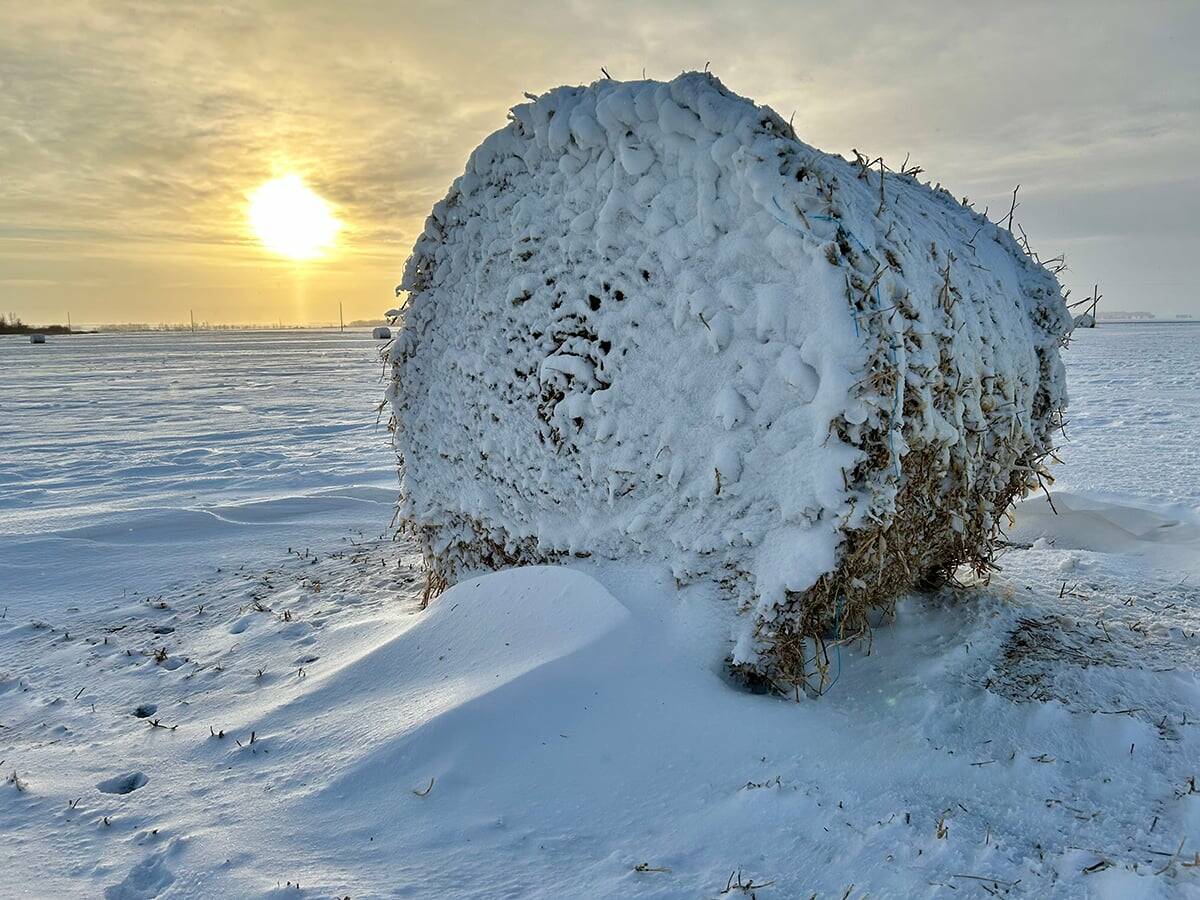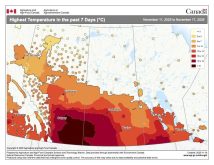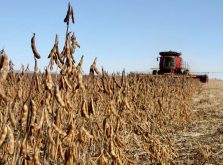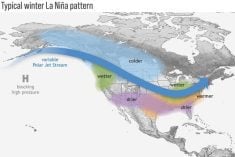June’s global temperature analysis has come out. Our planet has set another record for heat, making it the 13th consecutive month with record-breaking temperatures and 12th consecutive month of hitting or exceeding 1.5 C above pre-industrial temperatures.
According to Copernicus Climate Change Service, the global average surface air temperature for June was 16.66 C, which was 0.67 C above the 1991–2020 average for June and 0.14 C above the previous high set in June 2023.
The global average temperature for the past 12 months was also the highest on record, at 0.76 C above the 1991–2020 average and 1.64 C above the 1850–1900 pre-industrial average. Odds are increasing that 2024 will beat 2023 as the warmest year on record.
Read Also

What is perfect Christmas weather?
What is ‘perfect’ Christmas weather on the Prairies? Here’s where you should head this holiday, according to historical weather data.
Along with record-breaking air temperatures, the average surface ocean temperature between 60 degrees south and 60 degrees north also set a record at 20.85 C. This is the 15th consecutive month of record-breaking ocean surface temperatures.
Now to this week’s severe summer weather topic: straight-line winds. We know tornadoes can produce the most powerful winds on earth and they can be truly awe inspiring to see. Not very many of us will actually experience one because their spatial extent is small.
But I can pretty much guarantee that if you live on the Prairies, you will experience a thunderstorm that produces very strong straight-line winds. Sometimes these winds can be so strong and devastating that their damage is attributed to a tornado, and the only way to determine what caused the devastation is to look at the pattern of damage.
With tornadoes, the damage will be more random, with trees and objects broken and thrown in different directions due to swirling air. With straight-line winds, nearly all the damage is unidirectional.
Nearly all straight-line winds, or at least the really damaging ones, occur near the leading edge of a thunderstorm. Thunderstorms are made up of updrafts and downdrafts.
The updrafts are easy to understand. They are regions where air is moving upward due to being warmer than the air around them or being forced upward as horizontally moving air is deflected upward by something like a cold front.
Downdrafts are a little more difficult to understand. When a thunderstorm moves in, we often get that first big blast of wind that causes everyone to run for shelter and announces the arrival of the storm. There are two main causes of these winds.
First, imagine all the air that is rising to the top of the storm. It must go somewhere. In a strong storm, an overhead jet stream is trying to vent away this air, but often can’t move it all. Eventually the build up of air becomes big enough, or the updraft weakens, and that air begins to fall back toward the ground.
Combine this falling air with the rain that is also falling, pushing on the air around it, much like when you spray something with a garden hose, or in a big waterfall.
This downward moving air hits the ground and must flow somewhere. The area of falling rain acts like a wall, preventing much of this falling air from flowing back into the storm, so instead it is pushed in front of the storm.
These downbursts can be short-lived or they can continue for long distances as the thunderstorm travels. Long-lived events are known as derechoes, the Spanish word for ‘straight’ or ‘direct’, depending on translation.
While not that common in Canada, they do occur. Peak wind speeds in these downbursts can hit over 100 km/h, with some gust peaking at over 200 km/h.
The worst derecho on record in Canada occurred in May 2022 in southern Ontario and Quebec. Wind speeds were recorded as high as 190 km/h along a path that extended for nearly 1,000 km and took nearly nine hours to play out. Damages exceeded $750 million, making it the sixth most costly weather disaster on record. Twelve people were killed, mostly from falling trees.
If you have lived through a few strong thunderstorms, you know that straight-line winds can also occur in the middle of the storm. One reasons is the jet stream or strong upper-level winds.
Strong thunderstorms often need strong upper-level winds to help vent the rising air. Occasionally, these strong winds can get caught in a strong downdraft and are basically deflected toward the ground. If they make it to the surface, they must spread out and can flow in several different directions, depending on the angle.
This type of straight-line wind can be confused with a tornado, because these winds seem more chaotic than the winds that preceded the thunderstorm.
So far, we have seen a fairly active thunderstorm season and as heat builds, it will either slow the activity or fuel it. The weather models show what appears to be an active pattern, so I would put money on us seeing plenty of thunderstorms.
In the next issue we will look at tornadoes. As interesting and spectacular as they are, no one wants to experience one. Maybe if we talk about them, we won’t see any this year. One can hope.
















